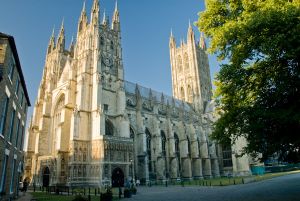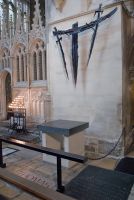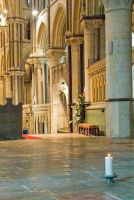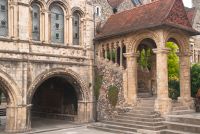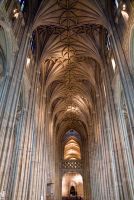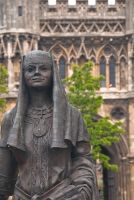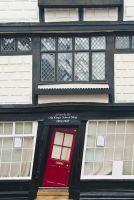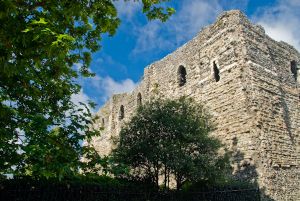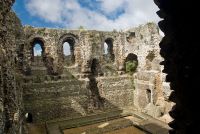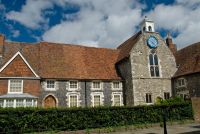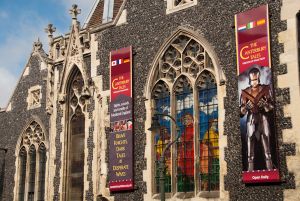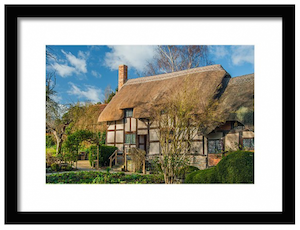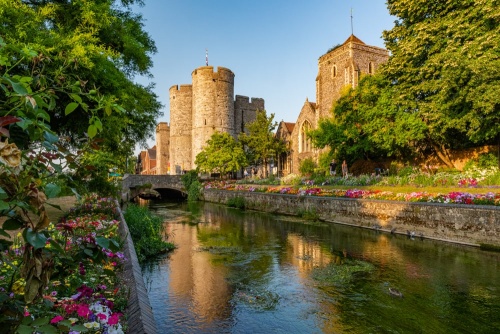
One of the most historic of English cities, Canterbury is famous for its medieval cathedral. There was a settlement here before the Roman invasion, but it was the arrival of St Augustine in 597 AD that was the signal for Canterbury's growth. Augustine built a cathedral within the city walls and a new monastery outside the walls. The ruins of St Augustine's Abbey can still be seen today.
Initially, the abbey was more important than the cathedral, but the murder of St Thomas a Becket in 1170 changed all that. Pilgrims flocked to Canterbury to visit the shrine of the murdered archbishop, and Canterbury Cathedral became the richest in the land. It was expanded and rebuilt to become one of the finest examples of medieval architecture in Britain.
There is much more to Canterbury than the cathedral. The 12th century Eastbridge Hospital was a guesthouse for pilgrims and features medieval wall paintings and a Pilgrim's Chapel. The old West Gate of the city walls still survives, and the keep of an 11th-century castle.
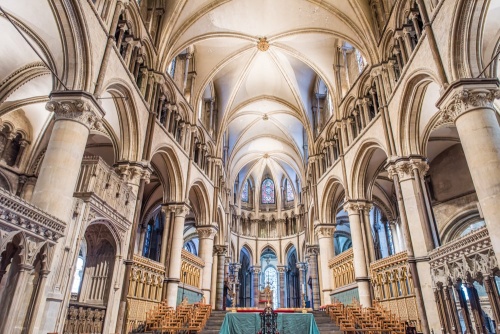
St Dunstan's church holds a rather gruesome relic; the head of Sir Thomas More, executed by Henry VIII.
The area around the cathedral is a maze of twisting medieval streets and alleys, full of historic buildings. A short distance outside the city walls stand the ruins of St Augustine's Abbey, including the graves of early Saxon kings and the traditional site of St Augustine's grave.
Beyond the abbey grounds is St Martin's Church, the oldest Christian church in England, begun before Augustine's arrival in Britain and incorporating Roman bricks.
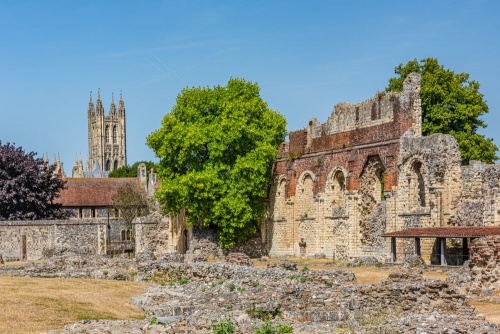
You can walk the Stour Valley Way long-distance footpath to nearby Fordwich, the smallest town in England, known for its timber-framed town hall. In Fordwich church is a beautifully-carved 12th-century stone said to have formed part of St Thomas Becket's shrine.
You can learn more about the early history of Canterbury at the Roman Museum, built over the remains of a Roman townhouse and incorporating early Roman mosaics and a hypocaust underfloor heating system.
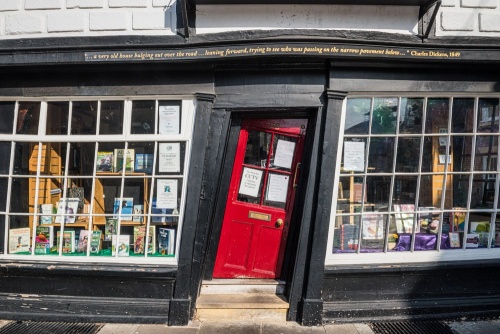
Near the Norman castle is Dane John Gardens, where you will find a Pre-Conquest castle mound. The name Dane John comes from the Norman French word donjon, which gives us the English word dungeon. Dane John Mound is linked to the city walls, which is punctuated with semi-circular turrets, or bastions. One of those bastions has been transformed into the Zion Chapel, a Victorian Baptist chapel.
Canterbury is one of the most satisfying historic cities to visit in England.
Related:
Canterbury attractions, historic buildings, and museums
Canterbury Travel Tips
About Canterbury
Address: Canterbury,
Kent,
England
Attraction Type: Town
Location map
OS: TR 1519 5646
Photo Credit: David Ross and Britain Express
HERITAGE
 We've 'tagged' this attraction information to help you find related historic attractions and learn more about major time periods mentioned.
We've 'tagged' this attraction information to help you find related historic attractions and learn more about major time periods mentioned.
Historic Time Periods:
Find other attractions tagged with:
11th century (Time Period) - 12th century (Time Period) - castle (Architecture) - Henry VIII (Person) - Medieval (Time Period) - Norman (Architecture) - Roman (Time Period) - Saxon (Time Period) - Victorian (Time Period) - wall paintings (Historical Reference) - Whitby (Place) -
NEARBY HISTORIC ATTRACTIONS
Heritage Rated from 1- 5 (low to exceptional) on historic interest
Canterbury City Walls - 0.6 miles (Historic Building) ![]()
Dane John Gardens - 0.7 miles (Garden) ![]()
Dane John Mound - 0.7 miles (Castle) ![]()
Canterbury Castle - 0.7 miles (Castle) ![]()
St Augustine's Abbey - 0.8 miles (Abbey) ![]()
Fyndon Gate - 0.8 miles (Historic Building) ![]()
Canterbury, St Mildred's Church - 0.8 miles (Historic Church) ![]()
Canterbury, St Mary Magdalene Tower - 0.8 miles (Historic Church) ![]()

